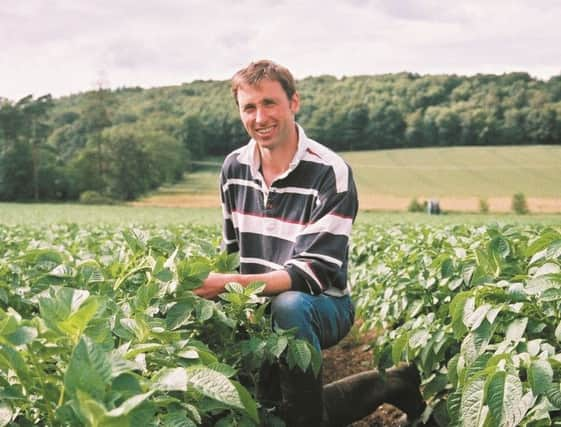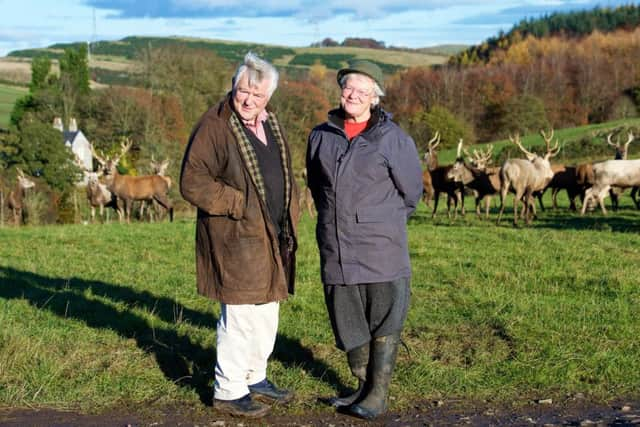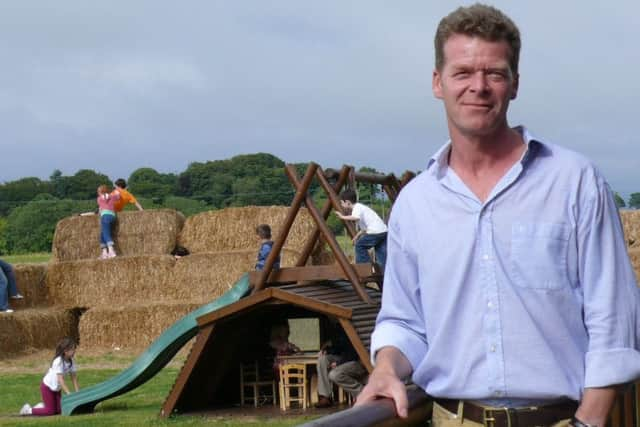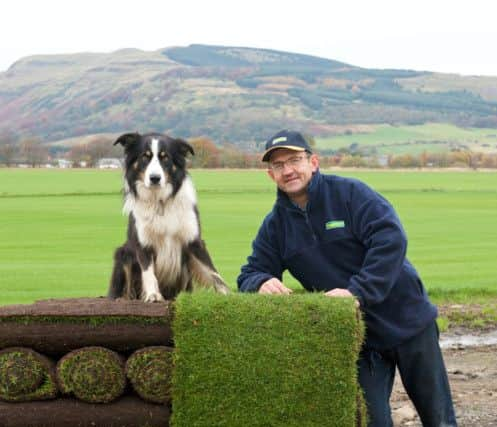Kingdom in the spotlight in 300 Farmers of Scotland


And it’s that seam Eilidh MacPherson tapped into to create her latest book, 300 Farmers of Scotland.
The editor of a bi-monthly magazine focusing on the farming industry, Eilidh used her contacts to get started on the book.
Advertisement
Hide AdAdvertisement
Hide AdShe personally knew around 80 farmers who are featured and word of mouth helped her discover even more who had stories to tell.


The compilation provides a glimpse of the innovation used by today’s farmers to ensure they not only survive but thrive.
Eilidh said: “I found it really interesting finding out what the farmers are doing differently these days – it was very enjoyable.
“The truth is I’ve only just scratched the surface as there are around 16,000 farmers in Scotland.
Advertisement
Hide AdAdvertisement
Hide Ad“However, I’ve already started on the second instalment and I’m hoping that will be ready in time for Christmas this year.”


300 Farmers of Scotland was released in December.And a number of farms in Fife feature within its 280 glossy pages.
Covering 132,500 hectares and a farmland area of 97,068 hectares, the Kingdom boasts 524 farms of 50 hectares or more.
There are 1530 farms and holdings, including 17 dairy, 19 specialist sheep, 28 specialist beef, 202 cereal, 44 specialist poultry and 282 mixed.
Advertisement
Hide AdAdvertisement
Hide AdUnderstandably, therefore, it was no mean feat for Eilidh to select the pick of the crop for her book.


Among those featured in this first instalment are Jim Orr of Milton of Blebo Farm, Pitscottie, John and Nichola Fletcher of Reediehill, Auchtermuchty, John Mitchell of Allanhill, St Andrews and Roddy Baird of Kirkness Farm, Lochgelly.
Former dairy farmer Jim Orr has tripled his broccoli acreage from 29 hectares in 2004 to around 100 hectares.
Jim told the author: “I work with East of Scotland Growers which has grown its market share and enabled me to increase the crop.
Advertisement
Hide AdAdvertisement
Hide Ad“The Growers provides the planting, planning, agronomy advice and marketing, while we do the harvesting. Our main markets are supermarkets and frozen product.”


The broccoli is hand cut and floretted by a gang of around 30 seasonal workers, usually from Bulgaria and Romania.
Potatoes are the other main crop at the 480 hectare farm, along with carrot, parsnips, wheat and barley.
Husband and wife team John and Nichola Fletcher also feature in the book. They set up their own deer farm more than 40 years ago, when they first moved into agriculture.
Advertisement
Hide AdAdvertisement
Hide AdJohn is now known as the leading expert in Scottish venison production.
He studied veterinary medicine at Glasgow before carrying out a PhD with Cambridge University, which saw him examine the effects of capturing wild red deer on the island of Rhum and the impact of farming on them.
John said: “It turned out to be an exciting piece of scientific research that, incidentally, showed these animals could be tamed and farmed successfully.”


Which is exactly what the couple went on to do.
Seasonal labour from overseas is a cornerstone of the success enjoyed by John Mitchell at Allanhill Farm, near St Andrews.
Advertisement
Hide AdAdvertisement
Hide AdJohn, who grows 110 acres of strawberries undercover on his 1200 acre arable property, employs an extra 310 members of staff from May to September, mainly from Bulgaria, Romania and Poland.
Advances in technology and the use of polytunnels means the Scottish season has extended from five to six weeks to five to six months.
John often becomes his workers’ doctor, travel consultant, banker and accountant. So it infuriates him to read reports in the press about poor treatment of migrant workers.
He said: “There is such a shortage of good people available to work on farms now, we have to pay a decent rate. It’s a shame there’s not a more balanced view of what is going on in the industry.”
Advertisement
Hide AdAdvertisement
Hide AdThe four Baird brothers at Lochgelly decided they needed to diversify to thrive.
So Andy and Jock took over 120 hectares of arable enterprises, while Willie teamed up with Roddy to establish a turf-growing business. That’s why you’ll see staff wearing Kiss My Grass baseball hats!
They now operate 300 acres of grass using state of the art machinery.
Roddy said: “In the summer, the grass is mowed three times a week and, at times, we harvest every day.”
Eilidh speaks from experience
Advertisement
Hide AdAdvertisement
Hide AdEilidh MacPherson combines hill sheep farming at Marbrack – between Ayr and Castle Douglas – with her husband Richard Nixon.
Together they farm 2500 acres carrying 1200 Blackface sheep.
Eilidh is also editor of a now bi-monthly publication, Farming Country magazine, which was known as farmingscotland.com when it was free.
Her last book From Thistle to Fern, which was published a decade ago, featured Scots who had emigrated to New Zealand and set up the High Country Sheep Stations.
Advertisement
Hide AdAdvertisement
Hide AdEilidh is a hill sheep and beef farmers’ daughter from the Isle of Skye and headed off overseas once she graduated from Edinburgh in agriculture.
She spent six seasons as a professional sheep shearer, employing Kiwis on Skye, then headed to the Antipodes for the winter.
She managed a lamb group, worked for Scotch Quality Beef and Lamb and then as an independent livestock buyer.
While in New Zealand, Eilidh wrote full time for the New Zealand Farmer for a couple of years – covering Southland and South Otago.
Advertisement
Hide AdAdvertisement
Hide AdShe also freelanced for a number of other titles including High Country Herald, Shearing Magazine, Southland Times and the Otago Southland Farmer.
Farmingscotland.com magazine was launched in September 2003, on her return from overseas – a free monthly title.
It changed its name to Farming Country in 2012 so it could be sold in newsagents and shops across Scotland, Northern England and Northern Ireland.
300 Farmers of Scotland is available locally now, priced £25, from J&G Innes in St Andrews, Blacketyside Farm Shop in Leven and East Neuk Books in Anstruther.